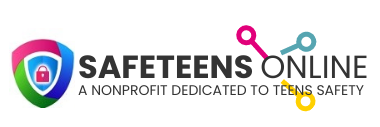A comprehensive study on Teenagers Cybersecurity Behaviors:
Overview
We “researched the effect of knowledge, peer influence and environment relating to
cybersecurity. We concluded: 1) Lack of knowledge 2) Time constraint 3) Low perceived
value were the leading causes of risky online behavior.
Our research helps us understand teenagers’ cybersecurity practices, motivations, and
techniques to make them advocates in digital safety and security.
Two hundred twenty-five students from 31 different schools participated as part of an
empirical study to understand the cybersecurity behaviors of current teenagers.
Outcome
Based on this evidence Safeteens adopted a peer-to-peer program for advocacy, where
K-12 students are taught by Safeteens ambassadors about cybersecurity via byte sized
tutorials. Their goal is to ensure that students have the know-how on digital safety
measures and associated risks, and they help motivate them to adopt safe practices.
A Novel Cyber Incident Risk Prediction Model Using Machine Learning
Overview
Physical isolation during the COVID-19 pandemic prompted a 45% increase in digital use,
leading to increased cyber incidents. This project seeks to understand the risk impact of prolonged
internet use and evaluate opportunities for cyber education to lower such risk. In preparation for
subsequent work, the project will learn about patterns in distress and the recovery of affected
individuals. A 20-question English-language survey was completed by 6th through 12th graders
(n=1,869) across four countries.
Outcome
Analysis of the survey indicated that the number of hours of internet use was a driver of the
risk of cyber incidents. In addition to statistical analysis, the methodology used Google’s VertexAI
AutoML to generate an ensemble model to predict risk (on n=1 basis) from usage patterns (length of
usage, gaming use, etc.). The cyber risk predictor model set has high overall accuracy (f1 score of 0.88)
and precision and recall of 0.878. This low-cost approach to personalized risk scores could support
periodic evaluation and trending of educational effectiveness in cyber safety. Participants reported a
strong association (Spearman’s Rho = 0.957) between distress from cyber incidents and recovery time.
Among the respondents with high distress experiences, there is an urgent need to design support
programs to help them cope.
How Cybersmart Are You Compared to Your Children?
A Study on Online Safety and Cybersecurity in Parent-Child Relationships.
Overview
This study aims to examine the level of cybersmartness among parents
compared to their children in the context of online safety and cybersecurity.
The study will utilize a survey questionnaire to gather data from a sample of parents
and their children. The survey will include questions related to online behaviors,
awareness of risks and threats, understanding of privacy settings and parental controls,
and experiences with cyberbullying or online predators. The data will be analyzed using
statistical techniques to identify patterns and trends.
The results of the study will provide insights into the level of cybersmartness
among parents and their children, as well as identify potential areas for improvement in
online safety and cybersecurity education. The study will also highlight any differences
or similarities in online behaviors and attitudes between parents and children.
The study will contribute to the growing body of research on online safety and
cybersecurity in parent-child relationships, and provide practical recommendations for
parents to enhance their cybersmartness and protect their children from online threats.


